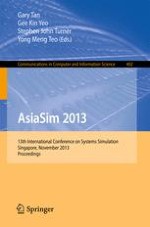2013 | Buch
AsiaSim 2013
13th International Conference on Systems Simulation, Singapore, November 6-8, 2013. Proceedings
herausgegeben von: Gary Tan, Gee Kin Yeo, Stephen John Turner, Yong Meng Teo
Verlag: Springer Berlin Heidelberg
Buchreihe : Communications in Computer and Information Science
